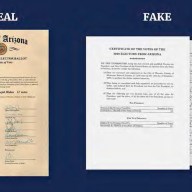March is National Engineering Month and the theme this year is Designing the Future. The head of Engineers Canada says the focus on kids aged eight to 14 is to show them how diverse and fun engineering can be.
“National Engineering Month shows students how, through engineering, they can make a difference and help to shape the world in which we live,” said CEO Chantal Guay. “By effectively introducing the nation’s youth to engineering, we are both strengthening our profession and helping to sustain and enhance the skills needed for Canada to compete in a global, knowledge-based economy.”
Events across the country included igloo building, artwork, essay contests and impromptu design challenges (go to New-sng.com for a full list of events). It’s also highlighting the range of places engineering can take you.
Julie Payette of Montreal has taken her engineering degree into outer space. She was selected by the Canadian Space Agency in 1992 to be a technical adviser for the Mobile Servicing System, the robotic system Canada contributes to the International Space Station. She joined the Discovery mission for 10 days in space in 1996.
Katie Krause, MSc, P.Eng, has gone the other way with her studies. The PhD student is exploring the very small through nanotechnology. Reached at her lab at the University of Alberta, she explained her work on material sciences.
“It means studying different metals, glasses and organic materials and how they can be formed into tiny structures,” she said. Her team develops “thin films” that could be used to cover windows to keep out harmful UV light. She’s also working on a thin film that changes colour when exposed to carbon monoxide, which could be a life-saving safety device one day.
Young people who are creative, good at math and science, and who like to build new things are likely to thrive as engineers. After focusing on math and science in high school, students should enrol in an engineering program accredited by Canadian Council of Professional Engineers. There are more than 30 programs in Canada; go to New-sng.com and click on Education for a list.
After that, budding engineers need to register with their provincial engineers association to apply for a license. After three or four years of supervised work, they can take the exam. If they pass, they can finally add the “P. Eng.” to their name.
















